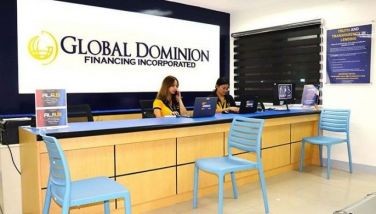International sourcing via eMarketplaces
September 26, 2003 | 12:00am
Enterprises are becoming more open to trade liberalization challenges after studying their effects on the global business landscape. In fact, CEOs are beginning to embrace how the ASEAN Free Trade (AFTA) scheme would impact their companies’ procurement and sales processes, especially in the area of market reach.
Truth be told, global sourcing is not a new concept in traditional purchasing. The excitement, however, arises when companies tie in their worldwide sourcing requirements with the emergence of eMarketplaces.
Several reasons exist why enterprises venture into international sourcing. Most want to attain cost and price benefits, obtain better quality goods, expand supplier sources when options are limited at home, and gain from technology transfer. Differentials in production costs arise due to discrepancies in labor charges, lower production cost inputs (i.e., strategic raw materials), foreign exchange variances, and even government subsidies. Companies are moving beyond local shores to establish their presence overseas, and support double-digit growth in corporate profits over the longer horizon.
Early participation in eMarketplaces has aided companies venturing into the international arena. More than widening trading partners’ supplier network, companies attain improved customer responsiveness, and obtain a clearer view of how international purchasing procedures work. This includes familiarity with international documentation processes and confidence relative to material forecasting approaches. Through proper interfacing with financial systems’ e-commerce-related resources, verification processes become accessible, especially for letters of credit, multiple bills of lading, import licenses, dock receipts, certificates of origin, insurance coverage and inspection, among others.
So, how does it work? The initial step begins when leaders express their full support for the vision of improving their business’ competitive position. This would include aspects involving quality, cost, technology and customer responsiveness. Once an item has been qualified for global sourcing, buyers need to carefully select potential sources of supply – Is the aggregate requirement large enough to attract direct suppliers? Will it involve intermediaries like brokers, agents or trading firms? Or, would a company be better off securing requirements from internal intermediaries like foreign affiliates/subsidiaries?
Next, proper evaluation of supplier choices must be made in terms of cost, product quality, delivery and financial risks, as well as long-term partnership potentials. Online auctions make it a lot easier for firms to decide, whether they will be more competitive securing requirements locally or overseas. Negotiations coursed through eMarketplaces provide leeway for international companies to plan ahead based on required lead times, preferred packing and currency settlement, quality compliance requirements, payment terms, and other technical and/or administrative support procedures.
The influx of more players in eMarketplaces underscores the fact that more businesses want to seize the benefits during their early adoption phase. In fact, firms are more able to leverage opportunities through proper risk-return assessment procedures, as negotiation processes are effected online. The supply base is better configured according to buyers’ aggregate volume requirement, while appropriate benchmarking tools are available to aid business leaders’ assessment of gaps within their overall business process.
Responding to globalization does not necessarily mean that companies must have deep pockets to survive its challenges. Participation in eMarketplaces provides decision-makers instant access to information, and has significantly aided the way companies are run. Buyer behavior transparency is achieved to assist long-term decisions regarding investments. Moreover, managers get a better feel of lucrative markets by gaining insights on logistics and other trade-related charges.
But instead of having to reinvent the wheel on your own, eMarketplaces move organizations a few steps forward and allow them to cohesively align the processes involved in the supply chain management at the least possible cost. In the end, companies have to ask themselves this question: Do I want to get left behind?
Christine Yap-Tan is the CEO of SourcePilipinas.com Inc., the eMarketplace of Yapster e-Conglomerate Inc. You may e-mail her at [email protected].
Truth be told, global sourcing is not a new concept in traditional purchasing. The excitement, however, arises when companies tie in their worldwide sourcing requirements with the emergence of eMarketplaces.
Several reasons exist why enterprises venture into international sourcing. Most want to attain cost and price benefits, obtain better quality goods, expand supplier sources when options are limited at home, and gain from technology transfer. Differentials in production costs arise due to discrepancies in labor charges, lower production cost inputs (i.e., strategic raw materials), foreign exchange variances, and even government subsidies. Companies are moving beyond local shores to establish their presence overseas, and support double-digit growth in corporate profits over the longer horizon.
Early participation in eMarketplaces has aided companies venturing into the international arena. More than widening trading partners’ supplier network, companies attain improved customer responsiveness, and obtain a clearer view of how international purchasing procedures work. This includes familiarity with international documentation processes and confidence relative to material forecasting approaches. Through proper interfacing with financial systems’ e-commerce-related resources, verification processes become accessible, especially for letters of credit, multiple bills of lading, import licenses, dock receipts, certificates of origin, insurance coverage and inspection, among others.
So, how does it work? The initial step begins when leaders express their full support for the vision of improving their business’ competitive position. This would include aspects involving quality, cost, technology and customer responsiveness. Once an item has been qualified for global sourcing, buyers need to carefully select potential sources of supply – Is the aggregate requirement large enough to attract direct suppliers? Will it involve intermediaries like brokers, agents or trading firms? Or, would a company be better off securing requirements from internal intermediaries like foreign affiliates/subsidiaries?
Next, proper evaluation of supplier choices must be made in terms of cost, product quality, delivery and financial risks, as well as long-term partnership potentials. Online auctions make it a lot easier for firms to decide, whether they will be more competitive securing requirements locally or overseas. Negotiations coursed through eMarketplaces provide leeway for international companies to plan ahead based on required lead times, preferred packing and currency settlement, quality compliance requirements, payment terms, and other technical and/or administrative support procedures.
The influx of more players in eMarketplaces underscores the fact that more businesses want to seize the benefits during their early adoption phase. In fact, firms are more able to leverage opportunities through proper risk-return assessment procedures, as negotiation processes are effected online. The supply base is better configured according to buyers’ aggregate volume requirement, while appropriate benchmarking tools are available to aid business leaders’ assessment of gaps within their overall business process.
Responding to globalization does not necessarily mean that companies must have deep pockets to survive its challenges. Participation in eMarketplaces provides decision-makers instant access to information, and has significantly aided the way companies are run. Buyer behavior transparency is achieved to assist long-term decisions regarding investments. Moreover, managers get a better feel of lucrative markets by gaining insights on logistics and other trade-related charges.
But instead of having to reinvent the wheel on your own, eMarketplaces move organizations a few steps forward and allow them to cohesively align the processes involved in the supply chain management at the least possible cost. In the end, companies have to ask themselves this question: Do I want to get left behind?
Christine Yap-Tan is the CEO of SourcePilipinas.com Inc., the eMarketplace of Yapster e-Conglomerate Inc. You may e-mail her at [email protected].
BrandSpace Articles
<
>
- Latest
Latest
Latest
November 11, 2024 - 1:43pm
By EC Toledo | November 11, 2024 - 1:43pm
November 6, 2024 - 7:16pm
November 6, 2024 - 7:16pm
November 6, 2024 - 4:50pm
November 6, 2024 - 4:50pm
November 4, 2024 - 9:12am
November 4, 2024 - 9:12am
November 1, 2024 - 9:00am
By Aian Guanzon | November 1, 2024 - 9:00am
October 31, 2024 - 12:02pm
October 31, 2024 - 12:02pm
Recommended






























